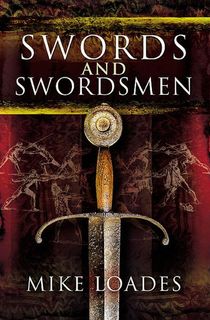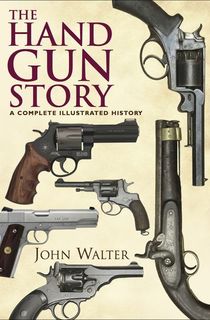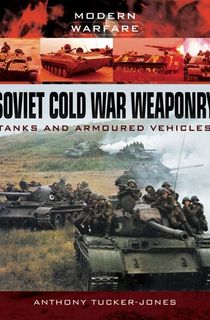You can’t fully understand the torrid and tangled history of humanity without first looking at the weapons and militaristic force that have defined it. The technological developments of war and its tactics are an indelible and immensely difficult part of our lives, one with wide-reaching consequences through the centuries. From the primitive tools of early civilization to the city-wrecking bombs and drone warfare of today, it’s an area of the past, present, and future that fascinates and repulses us in equal measure. For those interested to learn more, here are ten nonfiction books on weapons through the eras.

War and Technology
Professor Jeremy Black M.B.E. is an English historian and expert on political and international relations, once described as "the most prolific historical scholar of our age." In War and Technology, he offers a philosophical and policy-based reading of the role of technology in world conflict, particularly how advances in areas such as drone warfare and unmanned vehicles has changed things over the decades. Black says that technology alone does not change war but the power behind the tools at play.

The Influence of Air Power Upon History
Once warfare took to the skies, the game was irrevocably changed. Air-based weaponry has become especially advanced over the decades, turning into a multi-trillion-dollar industry and some of the most harbored military secrets around the world. Author Walter J. Boyne depicts the contributions of some of the most important figures in this field and traces the evolution of air power in war over the past century of so, revealing the startling pace with which it has unfolded.

Bronze Age Military Equipment
Historians date what is known as the Bronze Age from around 3300 B.C.E. to 1200 B.C.E., a time when the use of bronze as a technological and artistic tool was at the forefront. Bronze is harder and more durable than other metals available at the time, which made it especially popular for weaponry of all kinds. Howard's book offers a knowledgeable perspective on the military tools and weaponry of the Bronze Age, spanning from the Mediterranean to the Middle East.

Swords and Swordsmen
The art of swordsmanship is thousands of years old, spanning continents and cultures. The method of making and using them has varied across nations and experts, from feudal Japan to ancient Egypt to Europe of the Middle Ages. Mike Loades's book offers an agonizingly detailed breakdown of the millennia-old evolution of the sword, from how they're made and used to the people who wielded them with expert skill. As a sword expert and stuntman, Loades is the perfect guide for this historical jaunt, both detailed and enthusiastic, and with plenty of previously unpublished images accompanying his studies.
Related: This Medieval Weapon Was So Frightening Scottish Forces Surrendered On-Sight

The Hand Gun Story
John Walter is the celebrated author and historian behind a number of military and weapon-themed guides and textbooks, tackling everything from rifles to airguns and more. This book takes on the ever-familiar handgun, a weapon with a long and storied history. The Handgun Story covers all aspects of the weapon's fascinating history, from its development to its evolution through two World Wars, and its shift into a weapon of undercover agents and assassins alike.

Infantry Small Arms of the 21st Century
Soldiers in today's modern armies have access to ever more advanced infantry weapons. Guns have become more sophisticated, lighter to carry, more accurate and easier to load. The well-oiled machinery of warfare has never stopped moving forward. It's a technological advancement that can leave some of us feeling dizzy thinking about it. For enthusiasts looking for an extensively detailed guide to the small arms of warfare of the past twenty years, Leigh Nevill's book is ideal. The author draws on the operational combat experience of the users in war zones such as Iraq, Afghanistan and Ukraine.

Instruments of Darkness
During the Second World War, radio and radar technology experienced a rapid evolution on both sides of the conflict, making it the most technically advanced battle of modern times. The creations of both the Axis and Allied powers were tightly held state secrets for many years. When that veil of secrecy was lifted, however, it helped to drastically change the game for radio-related systems for decades to come. Alfred Price’s book pulls back the curtain on this period of militaristic innovation.

Soviet Cold War Weaponry
While the Cold War wasn’t technically fought on the battleground, the army forces of the USSR certainly didn’t skimp on their weaponry, just in case. Several proxy wars were fought in Africa and the Middle East, and these conflicts employed the Soviet weapons, vehicles, and aircraft that became as iconic as they were feared. Between the 1950s and 1980s, various Soviet and Warsaw Pact countries produced thousands of tanks and armored vehicles ready for the seemingly inevitable Third World War. Much of it is still used to this day and inspired a new generation of warfare. Tucker-Jones's book offers a deep dive into this era, complete with full-color photography.

Glock
The Glock is a pistol initially created for the Austrian Armed Forces in the 1980s. Now, it’s one of the world’s most widely manufactured guns and is especially popular in the United States. It’s the weapon of law enforcement (an estimated two-thirds of all U.S. police officers carry a Glock), criminals, Hollywood heroes, and even soccer moms. Barrett’s book digs into not only the origins and initial creation of the Glock but how a savvy marketing campaign and the increased weaponizing of the first amendment made it a hot property across America.

The Making of the Atomic Bomb
This Pulitzer Prize-winning book digs into one of the most instantly recognizable images of 20th-century warfare, and one of its most acutely devastating. Nobel Laureate I. I. Rabi, one of the prime participants in the dawn of the atomic age, called it "an epic worthy of Milton. Nowhere else have I seen the whole story put down with such elegance and gusto and in such revealing detail and simple language which carries the reader through wonderful and profound scientific discoveries and their application."
Related: A Secret City in Tennessee Powered the Manhattan Project
This may be the definitive book on the atomic age, from its inception and development to the work of the Manhattan Project and the world-changing bombings of Nagasaki and Hiroshima. The horrific consequences of the atomic bomb live to this day and Rhodes's book keenly captures the work and thought process that made it happen.
This post is sponsored by Open Road Media. Thank you for supporting our partners, who make it possible for The Archive to continue publishing the history stories you love.
Featured photo: ARTUR KERKHOFF / Unsplash


